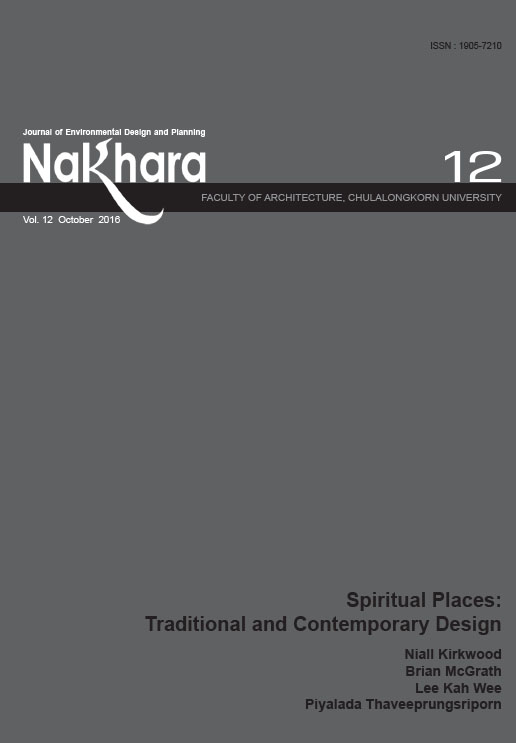Landscape Architectural Design of Memorials: The Case of the Seven Kings of Siam, Rajabhakti Park
Main Article Content
Abstract
Amemorial site and architectural landscape plan is symbolic and is psychologically designed to
communicate a meaning or a theme to visitors. Its success depends upon the unity of the following
three components:
1. Nature: the existing geography and environment
2. Site planning: the management of the space usage and symbolic landscape design
3. Landscape elements: statues and the decorative elements.
Of these three components, landscape architecture plays a crucial role in connecting the other two
components in order to create unity and the sense of place. This case study of the architectural landscape
design and planning of Rajabhakti Park, a Memorial to Seven Kings of Siam in Hua Hin, Prachuap Khiri
Khan Province, identifies the principles used in communicating the symbolic meaning.
The first part of the study analyzes the three main elements that led to the symbolic concept and includes:
-- The site plan derived from reading and understanding the values of the site, then using them in a
harmonious way,
-- The design which communicates symbolic meaning and has a specific form that reflects the
appropriate concept or philosophy,
-- The design of scenery and atmosphere perceived through usage of space and the composition of
landscape elements.
The second part of the study is involved with design concepts that suit the functions.
Article Details
References
Berque, A. (1994). (sous la Direction), La Maîtrise de la Ville, Urbanité Française, Urbanité Nippone. Paris: EHESS.
Blog Eduzones. (2016). Thai treatise of war strategy. Retrieved from https://blog.eduzones.com/poonpreecha/ 91664
Cullen, G. (1963). Townscape. London: Architectural Press.
GotoKnow. (2016). Thai treatise of war strategy. Retrieved from https://www.gotoknow.org/posts/252329
Hinchiranan, N. (1995). Architecture Thaï Traditionnelle. Bangkok: Université de Chulalonkorn.
Kalayanamitre, C. (1996). Architecture Thaï Traditionnelle. Bangkok: Association de l’Architecture Thaï.
NOR Na Pak Nam. (1997). Srima-Katha. Bangkok: Maung Boran.
NYS Philippe (sous la Direction de) Le Sens du Lieu. (2016). Bruxelles : Ousia.
Phirom, S. (1985). Pra Mérumas, Pra Méru, et Méru à la Période de Rattanakosin. Bangkok: Amarin.
Pinon, P. (1991). Lire et Composer l’Espace Public. Paris: SU.
Pluluang. (1997). Kati Siam (La Pensée Philosophique dans la Culture Thaï). Bangkok: Maung Boran.
Roger, A. (1995). (sous la direction de), La théorie du paysage en France (1974-1994). Paris : Champs Vallon.
Roger, A. (1997). Court Traité du Paysage. PARIS: Gallimard.

